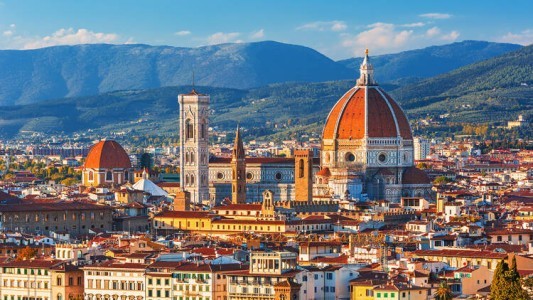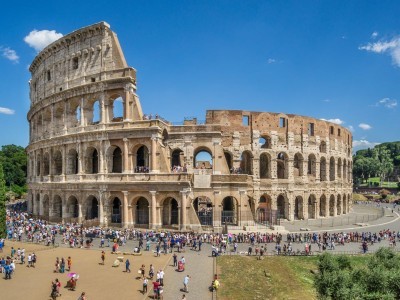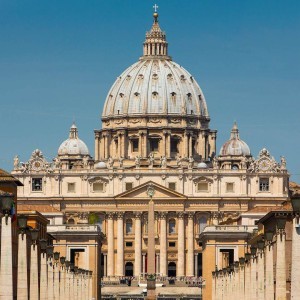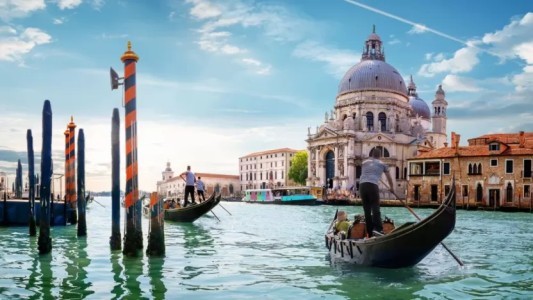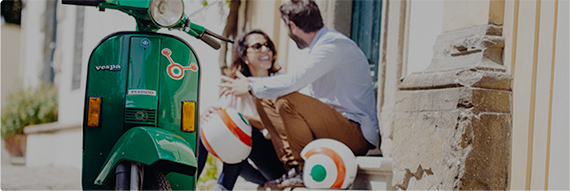Florence's beginnings
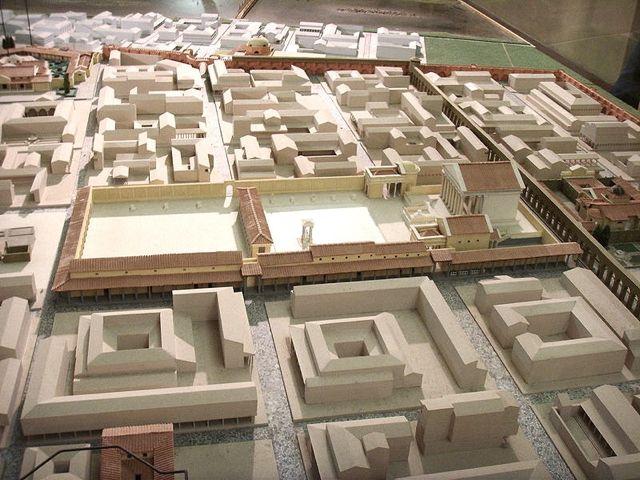
Although Florence is most famous for its Renaissance history, its beginnings go all the way back to the Roman times, and its medieval past also helped to define the city as it is today.
Florence was founded in 59 BC by Julius Cesar, who named it Florentia, “the flourishing one.” It was intended as a settlement for his veteran soldiers with the centre of the city where the modern Piazza della Repubblica now stands. The column in the piazza marks the interesection of the two main Roman streets.
The city sits in a sort of geographical basin, with the green hills of Fiesole, Settignano, Bellosguardo and Poggio Imperiale serving as a backdrop, while the Arno river cuts through it, determining much of the city's layout, culture and history. It also sits in a good position exactly between the imporant port city of Venice, 270 km (170 miles) to the north and Rome 290 km (180 miles) to the south.
Florence prospered as a medieval city and by the 11th century saw a Golden Age of art and architecture when construction began on some of today's most celebrated sights, such as the baptistery and the church of San Miniato al Monte. Politically, Florence began to gain power during this period as her arch-enemy, Pisa, fell into ruins. Economically, Florence's position in between the cities of Venice and Rome served her well, and the merchant business took off as the trade route grew.
The wool trade and banking were Florence's specialities and helped the city become an enormously wealthy one over the next centuries.
The old market, situated in the site of the modern Piazza della Repubblica, was where merchants could be found selling items traded from the far east, textiles, spices, fruit and vegetables. It was the heart and the fulcrum of the city. The wool industry brought in even more business to the city as the rest of Europe clamoured for Florence's famously crafted and dyed wools. The Florentine currency, the florin, became the world's first internationally accepted stable currency, banks flourished all over the city, and as merchants and bankers were becoming wealthy, they were able to afford to spend their money, which they often did on art.
Art in the Middle Ages was to serve the decoration of the churches and chapels of the wealthy patrons, and soon grew in to a national pass time. The church, the city and the wealthy commissioned the best artists to embellish the most important buildings for example the Duomo, Santa Croce and Santa Maria Novella. The artist Giotto was even called upon to design the Duomo's belltower. Often known as the “Grandfather of the Renaissance”, Giotto's work was to foreshadow the coming of the Renaissance, the rebirth of the culture of classical antiquity, that helped pull Europe out of the Dark Ages and into a new era.



